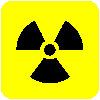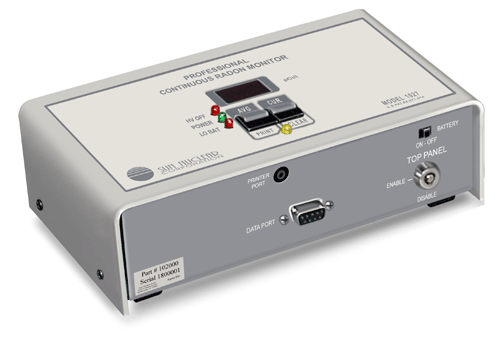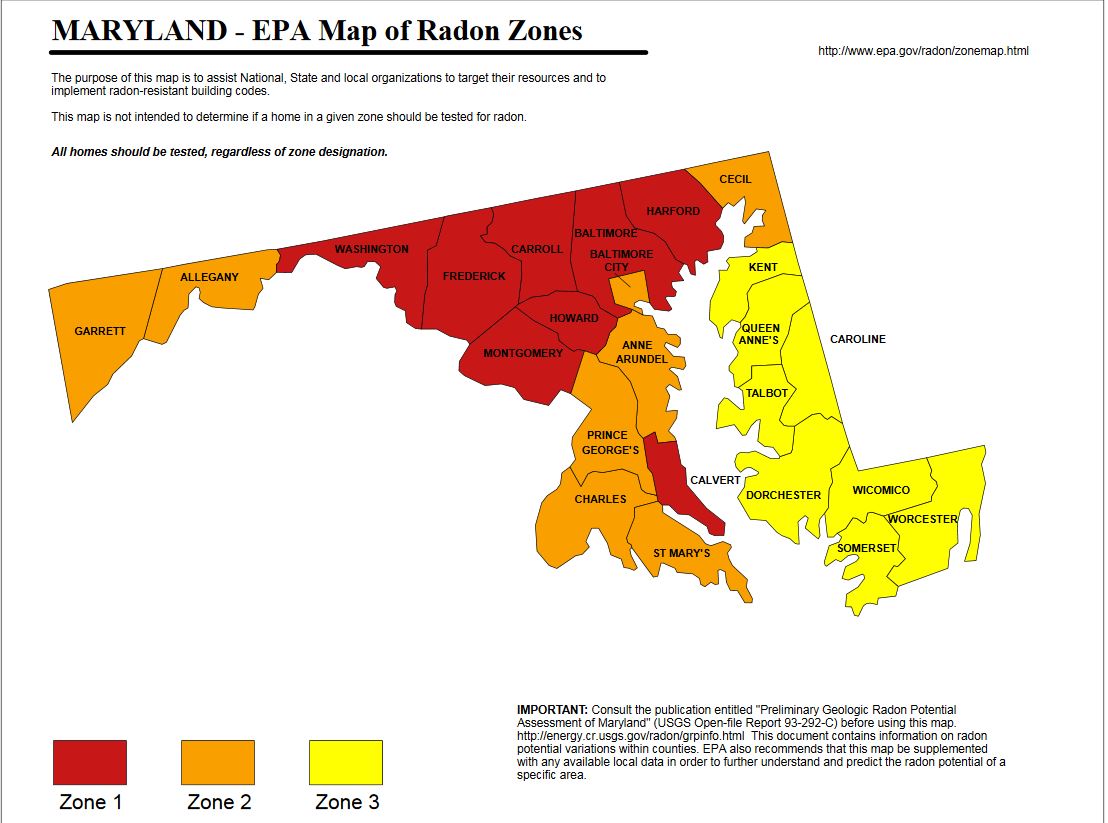Educating
Home Buyers, One
Inspection at a Time
Book your inspection on-line with
this form
Now get your Radon Test
Results the Same Day
ALP Inspections is now
using Sun Nuclear
continous radon monitors. No more waiting for lab processing.
The
results are now available at the end of the test period (48-96 hours).
Same day results are only available when the testing has started a
minimum of 48 hours before the scheduled inspection.
What is RADON?
Radon is a
radioactive gas
that is found in the earth's rock and soil. It is formed by the natural
breakdown of radium, which is itself a decay product of uranium. As
radon decays, it forms radioactive by-products which, if inhaled, can
damage lung tissue and cause lung cancer.
Invisible and odorless, radon is a
health hazard when it accumulates to high levels inside homes or other
structures. It is deadly. Indoor radon exposure is estimated to be the
second leading cause of lung cancer deaths each year in the United
States. Cigarette smoking is responsible for the large majority (87
percent) of lung cancer deaths.
How serious is RADON in the US?
Radon problems
have been
identified in every state. The U.S. Environmental Protection Agency
(EPA) estimates that nearly 1 out of every 15 homes in the U.S. has
indoor radon levels at or above the EPA's recommended action guideline
level of 4 picocuries per liter of air (pCi/L) on a yearly average.
|
|
Zone
1 counties have a predicted average indoor radon screening
level greater than 4 pCi/L (pico curies per liter) (red zones) |
Highest
Potential |
|
|
Zone 2
counties have a predicted average indoor radon
screening level between 2 and 4 pCi/L (orange zones) |
Moderate
Potential |
|
|
Zone
3 counties have a predicted average indoor radon screening
level less than 2 pCi/L (yellow zones) |
Low
Potential |
* Note that the above
map was obtained from the U.S. Environmental Protection Agency.
How does RADON enter a home?
Radium, which
releases radon,
is common in the earth's crust. Soils and rocks containing high levels
of uranium, such as granite, phosphate, shale and pitchblende are
natural sources of radon. High levels of radon in the soil are
primarily responsible for radon problems. The radon gas percolates up
through porous soils under the home or building and enters through gaps
and cracks in the foundation or in the insulation and through pipes,
sumps, drains, walls or other openings.
Water is another possible pathway for
bringing radon into the home. Water, when in contact with rock
containing uranium, absorbs the radon gas. The radon is then carried
into the home and released into the air in household dishwashers,
faucets, showers, or washing machines.
Water-related radon problems usually
involve deep private wells rather than community water supplies. In
some unusual situations, radon may be released from home construction
materials such as stone used to build fireplaces or solar heating
storage systems. Radon is not a problem outdoors because it is quickly
diluted to low levels by outdoor air.
What are the health effects of RADON gas?
Radon is estimated to be the second
leading cause of lung cancer in the U.S. today, causing thousands of
deaths each year. Cigarette smoking remains the primary cause.
Is RADON a problem in my home?
While an area's
geology may
indicate the potential for radon problems, it is an odorless, colorless
gas. The only way to determine if there is a problem is by measuring
the RADON level.
If you are buying or
selling a home, you should hire a trained professional to do the
testing for you. Repairs to decrease radon levels should be
made by a contractor certified by the National Radon Safety Board
(www.nrsb.org ) or the National Environmental Health Association
(www.neha.org).
There are two
general ways to
test for radon:
- Short-Term Testing
- The quickest way to test is with short-term
tests.
Short-term tests remain in your home for 2 days to 4 days, depending on
the device.
- Because radon levels tend to vary from day
to day and
season to season, a short-term test is less likely than a long-term
test to tell you your annual average radon level. If you need results
quickly, however, a short-term test followed by a second short-term
test may be used to decide whether to fix your home.
- Long-Term Testing
- Long-term tests remain in your home for more
than 90
days. "Alpha track" and "electret" detectors are commonly used for this
type of testing. A long-term test will give a more accurate annual
average radon level than a short-term test for your home.
- The average indoor level is estimated to be
about 1.3
pCi/L; and 0.4 pCi/L of radon is found in the outside air. Action
should be taken to reduce levels if the test results indicate an annual
average radon level of 4 pCi/L or higher.
What can I do to reduce the levels of indoor
RADON?
Today's technology can reduce
indoor radon levels to below 4 pCi/L; in most cases, to 2pCi/L or less.
A variety of methods are used to reduce indoor radon levels, from
sealing cracks in floors and walls to changing the flow of air into the
home.
Simple systems, known as sub-slab
depressurization, use pipes and fans to remove radon gas from beneath
the concrete floor and foundation before it can enter the home. Radon
is vented above the roof, where it safely disperses. Other methods may
also work in your home. The right system depends on the design of your
home and other factors.
Lowering high radon levels requires
technical knowledge and special skills. You should use a contractor who
is trained to fix radon problems. The EPA Radon Contractor proficiency
(RCP) Program tests these contractors. A trained RCP contractor can
study the radon problem in your home and help you choose the right
treatment method.
Check with your local American Lung Association or state radon office
for names of EPA- qualified or state-certified radon contractors in
your area.
As when hiring a contractor for any
other home repair, you may want to get more than one estimate.
The cost of making repairs to reduce radon depends on how your home was
built and the extent of the radon problem. Most homes can be fixed for
about the same cost as other common home repairs.
My only interest in the home buying process, is the best
interest of my clients. Whether your home is older or new, 500 or
10,000
square feet, buyers should not forgo the benefits of a comprehensive
home
inspection performed by an unbiasedthird
party.
Call
now to
book your inspection
410.746.6274
I have years
of experience and a reputation for thoroughness.
Only home
inspections
performed by licensed inspectors are valid under a real estate contract.
American Society of Home Inspectors
(ASHI) #
243786
MD License # 29689
All content copyright ©
2016, ALP
Inspections
Best viewed with Firefox







